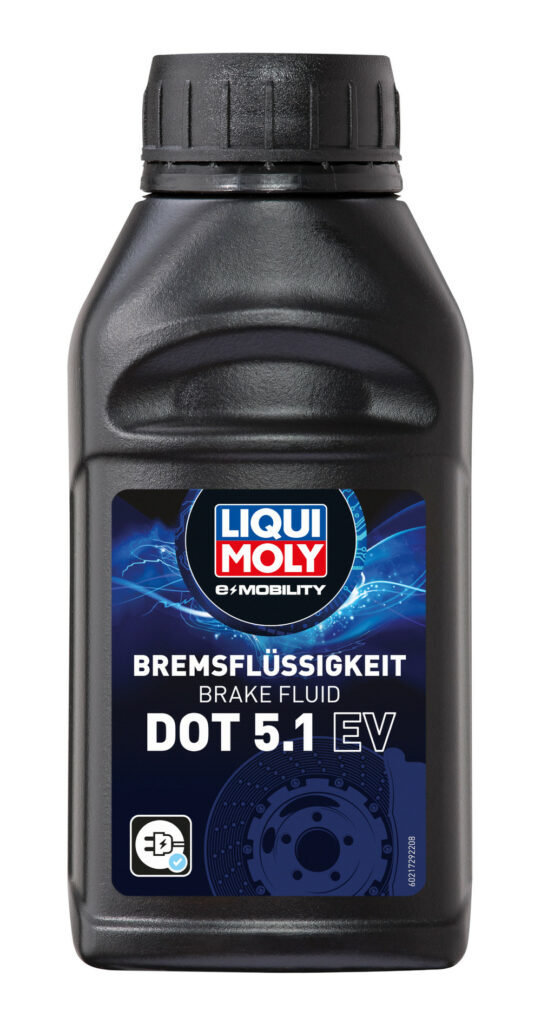Liqui Moly discusses its new EV-specific brake fluid

(Courtesy of Liqui Moly)
Liqui Moly has developed a brake fluid formulated for the unique requirements of EVs (writes Rory Jackson). While it might be assumed that the brake system at the wheels is one component that remains the same between EVs and IC engine-powered vehicles, the only significant similarity is that the brake fluid needs to be changed every 2 years.
In fact, EVs have very different and often more demanding performance requirements of brake fluids. As David Kaiser, head of r&d at Liqui Moly, explains, one of the key requirements is corrosion protection. “Because the electric motor also acts as a brake and uses it to generate energy for the battery, the mechanical brake system is used less often. That leads to spot corrosion,” he says.
Proprietary additives in the company’s new EV-focused solution – the Brake Fluid DOT 5.1 EV – counteract that.
“However, that does not mean a brake system in an EV does only a little work,” Kaiser notes. “These vehicles are generally heavier than those powered by an IC engine, and rapidly reach high speeds from which they also have to be braked abruptly in the event of danger.”
As a result of the greater weight (caused largely by the battery pack’s mass) and higher acceleration (owing to the electric motors, compared with IC engine ramping), EV brakes quickly become very hot when used. Brake fluids such as DOT 5.1 EV therefore have to be effective even when the brake system is hot, and therefore require high dry and wet boiling points.
“That high dry boiling point is over 260 ºC, while the wet boiling point is over 180 ºC,” Kaiser says.
The third differentiating property between IC engine brake fluid and EV brake fluid concerns electrical conductivity. This plays a vital role if an electrical system has been installed near the brake system and has not been sufficiently shielded.
Without proper shielding over cables, connectors and other points prone to EM emissions, voltages can be induced in the braking system, in a manner similar to wireless, inductive charging systems.
These voltages could then decompose the brake fluid or promote corrosion. The DOT 5.1’s chemistry is therefore composed for minimal electrical conductivity to mitigate the chances of that happening.
Kaiser comments that the fourth and last key performance quality of EV brake fluids is low viscosity. “As with motor oil, the flow behaviour is decisive for the performance of the brake fluid. The lower the viscosity, the faster an engine is fully oiled, and likewise a low-viscosity brake fluid transmits the braking pulses in the system more quickly. That helps electronic driver assistance systems such as anti-lock braking or electronic stability control to perform better, as they’ll be responding with improved sensitivity.”
Although viscosity is highly temperature-dependent, he notes, “At -40 ºC, the DOT 5.1 fluid exhibits a low temperature viscosity of just under 750 mm2/s, which is very low among brake fluids and helps ensure good braking performance for EVs in colder climates.”
ONLINE PARTNERS






















